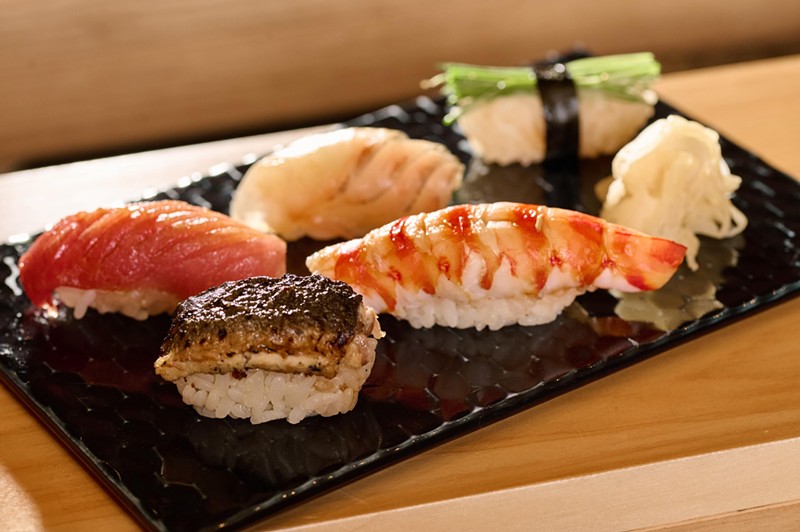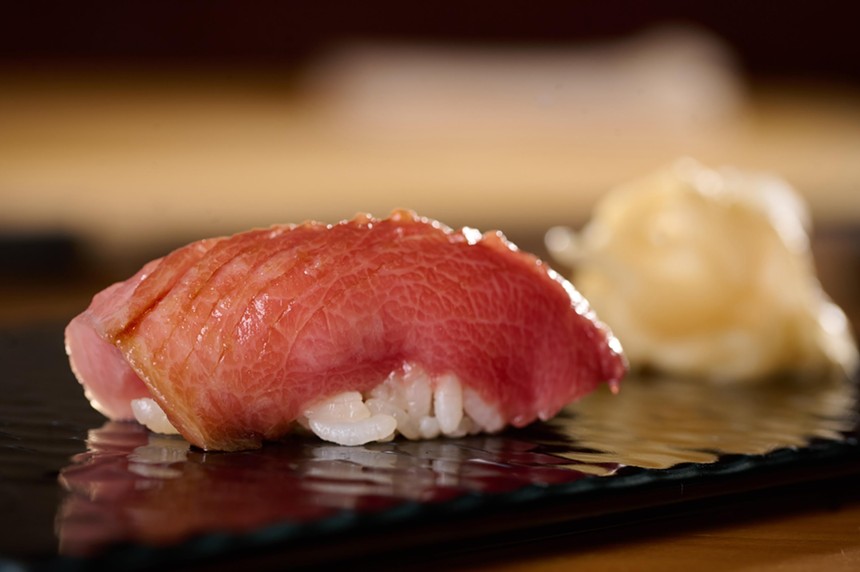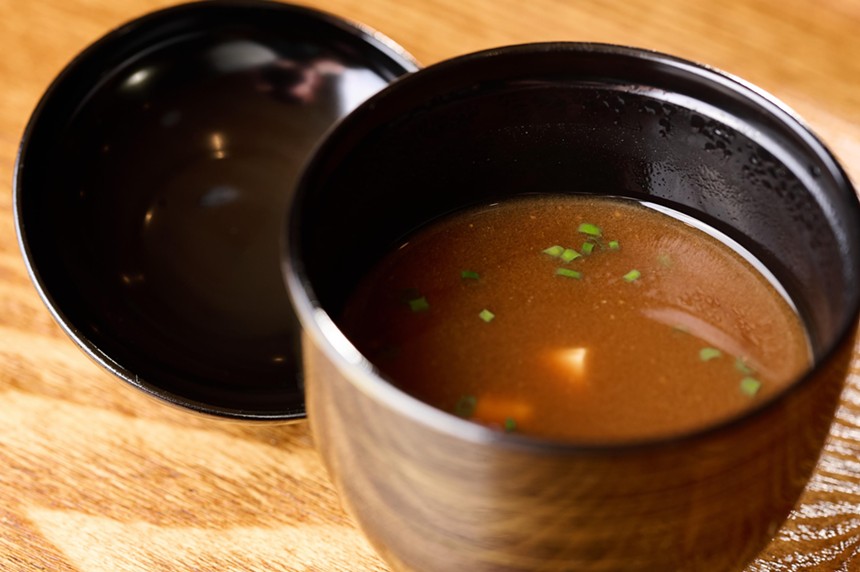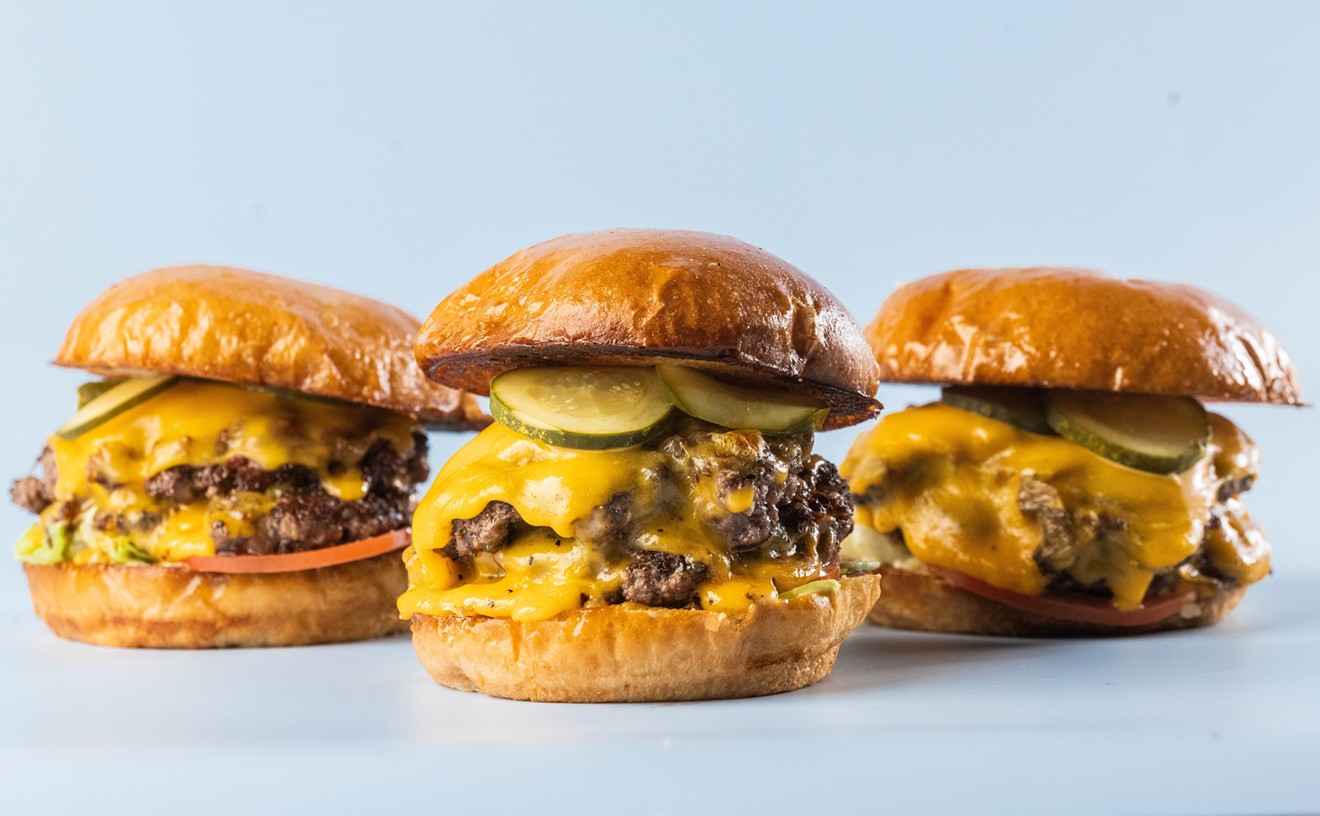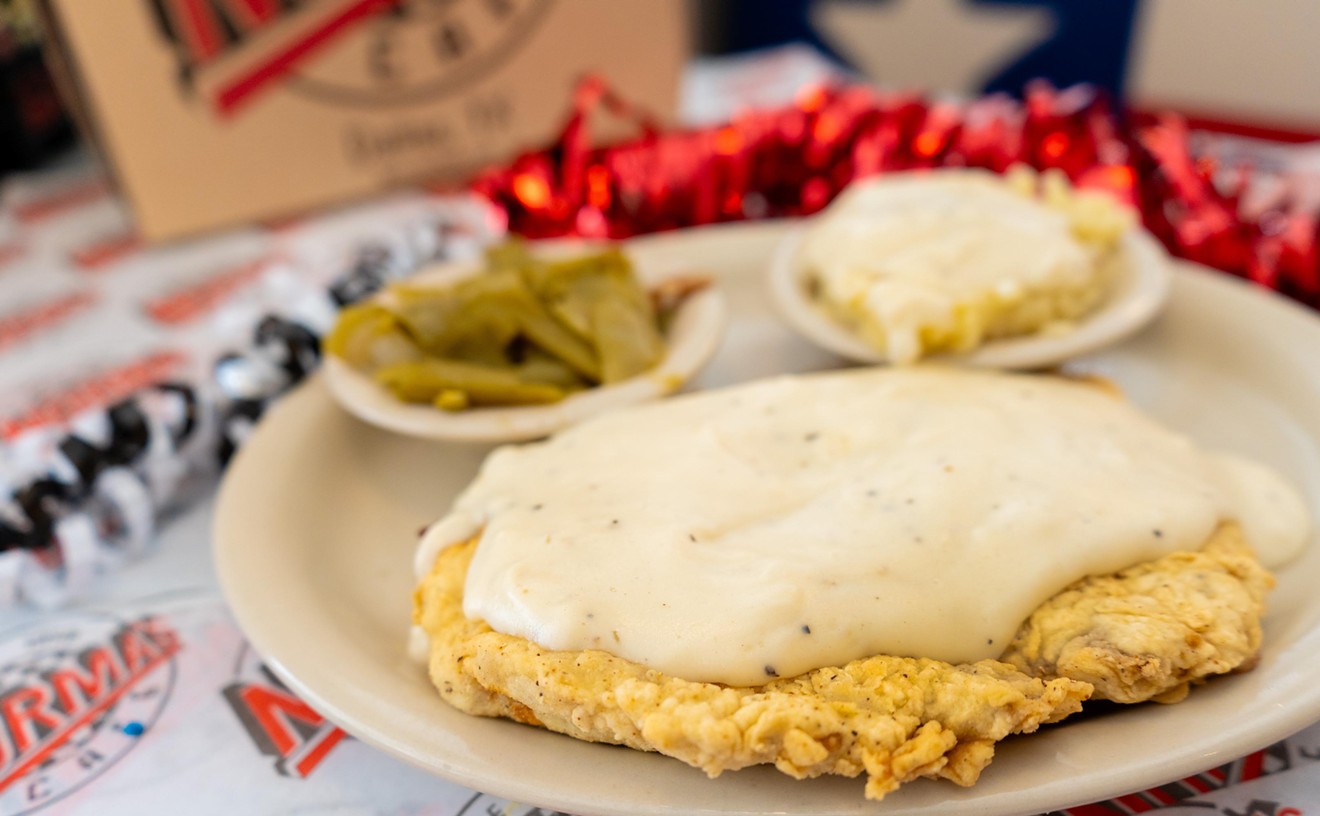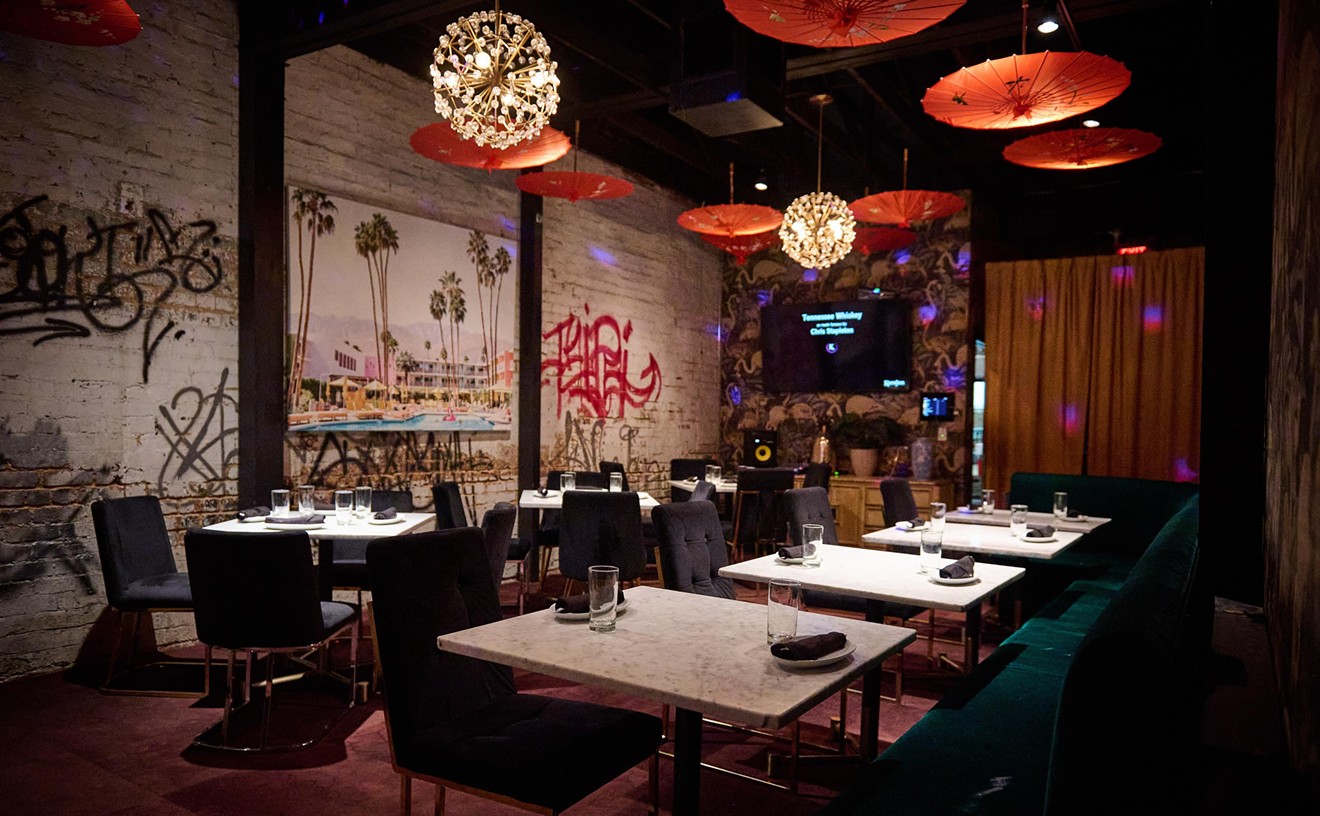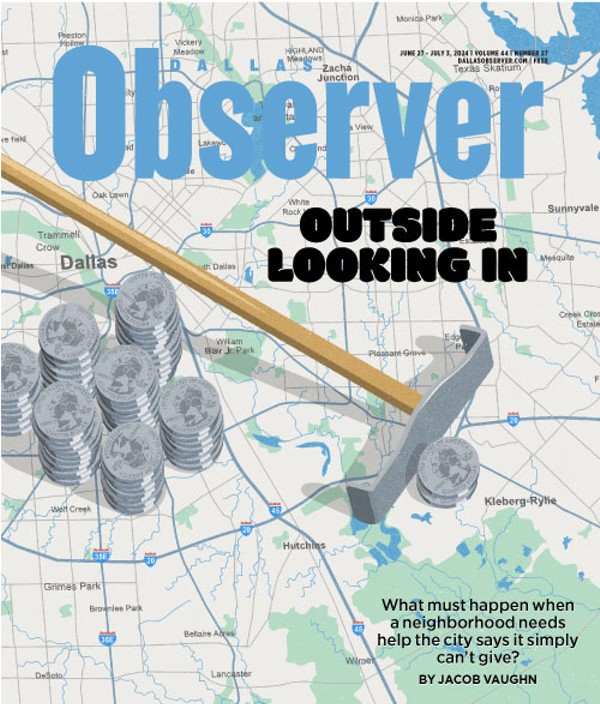Despite the surge in popularity, omakase can be intimidating to newcomers. Most omakase restaurants seat no more than 12 guests at a time, usually no more than twice in an evening. Reservations can be hard to come by, and when combined with the cost and trepidation of not knowing what you'll be served, anxiety is understandable. Allow us to recommend Tatsu, the eponymous restaurant from chef Tatsuya Sekiguchi, for starting your omakase journey.
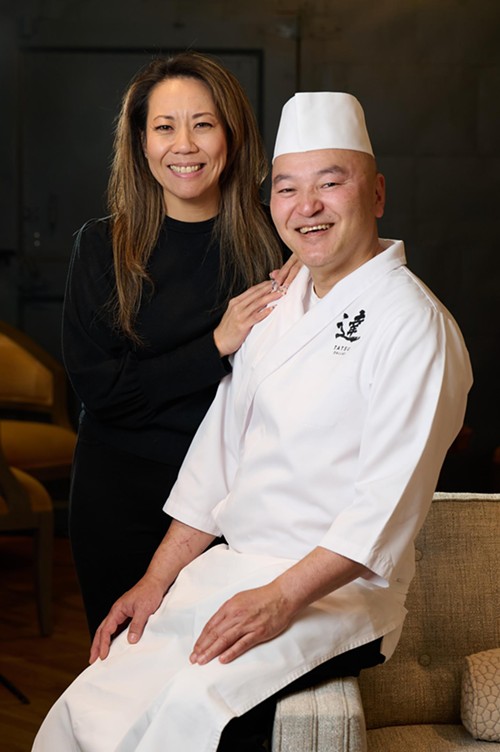
Hiroko (left) and Tatsuya Sekiguchi moved to Texas from New York in 2019. They saw an opportunity in Dallas. Their timing is nothing short of impeccable.
Alison McClean
Sekiguchi and his wife, Hiroko, noticed many of their customers in New York came from Texas, which prompted them to visit Dallas in 2019.
"Although the atmosphere was completely different from New York, I was overwhelmed by the rapid development of the city," Sekiguchi says. And compared to New York, which he felt was oversaturated with sushi, Sekiguchi saw room for opportunity.
"Also, experiencing the good climate and the warmth of the people, my wife and I decided to move to Texas on the flight back to New York."
Tatsu recommends guests arrive early for their reservations. While waiting, you’ll be offered a seat in the cozy but bright foyer, where you'll have a chance to peruse Tatsu’s broad sake and wine options. When service begins, you’ll be ushered into the dining room, full of maple-toned woods and a brick wall against the back. You sit low at the bar while Sekiguchi and sous chef Yoji Ishii begin working in front of you. The dining room is brightly lit, so as not to miss any of the visual and culinary performances about to take place in front of you.
Tatsu’s sushi style is an homage to traditional methods that are elegantly simple and allow the flavors to take center stage. Each dinner opens with one or two appetizers; on our visit, that meant lightly blanched asparagus drizzled with a sweet ume sauce, followed by katsuo tataki (seared skipjack) before the main courses began.
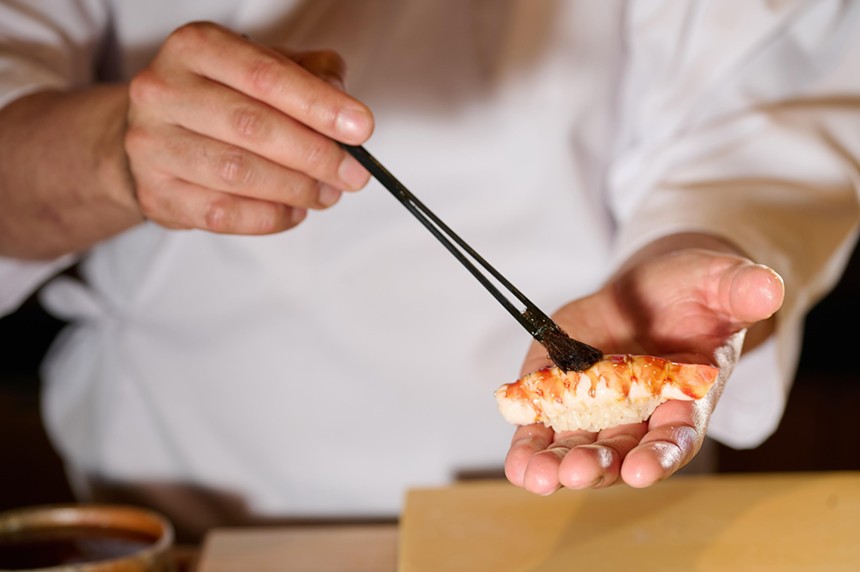
Tatsuya employs an edomae style of sushi using soy and vinegar to lightly flavor and cure fish.
Alison McLean
As each course progresses, you can follow along with the evening’s menu that remains in front of you. But fear not if you don’t know what aji or hotaru ika is; Sekiguchi translates each piece as he places it in front of you (in this case, horse mackerel and firefly squid). Subtle flavors step forward in each serving, with one flavor never overpowering another. Between courses, Tatsu encourages cleansing of your palette with bites of pickled ginger placed in front of each patron, and refilled as required.
Pacing of each course feels perfect, neither rushed nor overly delayed, and any worries we had about gorging ourselves on 14 courses of nigiri were unfounded. Instead, we reveled in the opportunity to discover previously undiscovered gems along the way (sawara, or Spanish mackerel, delicately smoked in a wooden box by Sekiguchi before serving, may be our new favorite). But sushi fans will also relish traditional standbys, like an exquisite bluefin toro so rich and fatty that it nearly melted on our tongue.
Most meals end with a hand roll prepared by Ishii, followed by bowls of rich miso soup. A small dessert concludes the service; a delicate dairy-free miso ice cream was the selection during our visit. But don't leave just yet; an a la carte menu appears with selections to end your meal, mostly made up of rare finds and ultra seasonal catches (we indulged in a piece of orange-spotted grouper maruhata for $14), as well as the opportunity to order another piece from the prior servings. We found ourselves full, but not painfully so, by night's end.
Sekiguchi sees more room for growth in Dallas' omakase scene and views restaurants such as Shoyo, Pearl and Namo as inspiration rather than competition.
"We respect and inspire each other. This is a sight you won't see in other cities," Sekiguchi explains. "I believe that in the near future Dallas will have a food culture comparable to Los Angeles and New York. I'm happy to be a part of that growth."
There is no avoiding the fact that dinner at Tatsu is an extravagance for many. There are just 10 seats per service, and know that dining solo in a prime weekend slot is a practical impossibility — we tried — so budget for a guest accordingly. Dinner is prepaid when booking a reservation on Tock; dinner for two (at $185 each), plus 18% automatic gratuity, taxes and fees will drop your net worth by nearly $480 before you and your companion ever step foot inside. Reservations are released on the first and the 15th of each month for the following two weeks and fill quickly.
Dallas certainly adore its fads, and it’s almost a given that some guests are claiming Tatsu’s reservations because of scarcity rather than a wish to expand their sushi knowledge. But to dine at Tatsu because of its exclusivity is to miss the lessons within. Tatsuya Sekiguchi provides both a master-level class on sushi for the well-versed and an accessible introduction to the art form for newcomers. The traditions employed at Tatsu are intended to respectfully illuminate the craft, but the light shines brightest on the elegant brilliance on display.
Tatsu, 3309 Elm St., No. 120, Dallas. Tuesday – Saturday, seatings at 5:30 p.m. and 7:45 p.m.

